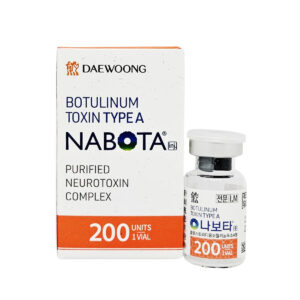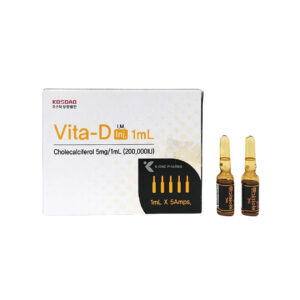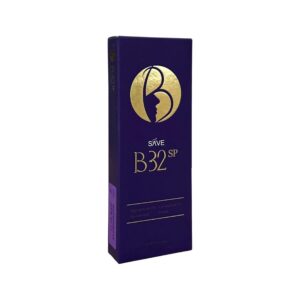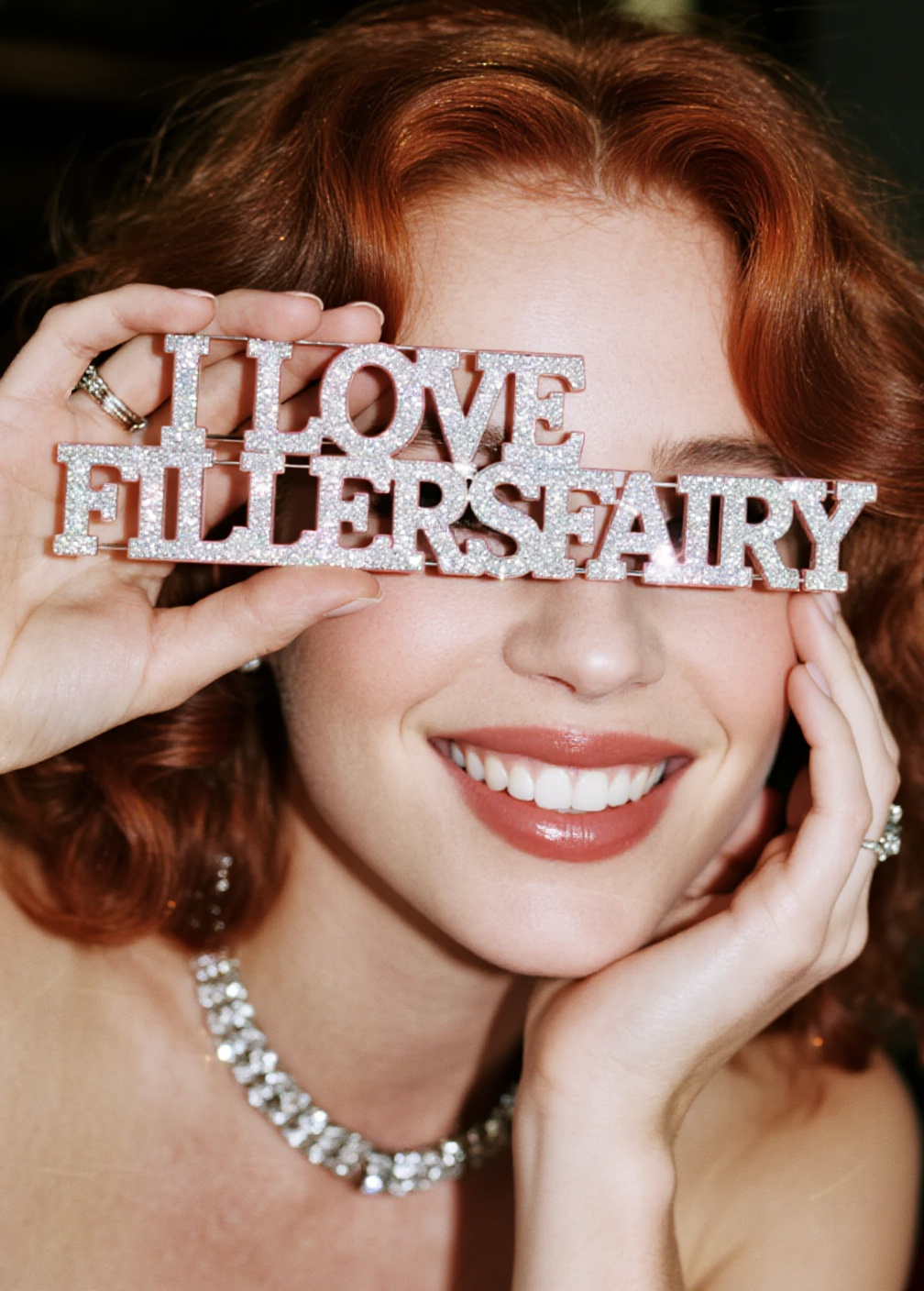No products in the cart.
Need help? Write to us support@fillersfairy.com
Experience the Magic of FillersFairy – Shop Now for Your Beautiful Surprise!
- DERMAL FILLER
- BODY FILLER
- SKIN BOOSTER
- NCTF 135HA
- DIVA EYE PN
- DIVA FACE PN
- AMI NAD+
- NadReju
- Miracle Touch BR
- Miracle Touch Up
- Regenovue Aqua Shine Plus
- Vitaran i
- Vitaran i 2
- Hyalace
- Elaxen PN
- PuriColl
- Rejeunesse Sparkle
- ASCE+ IRLV
- AestheFill
- AETER PURI EYES
- Ami Eyes
- Aqua Exosome
- ASCE Plus SRLV
- Celosome Aqua
- Curenex Glow
- Cytocare
- Exo-one
- High Inj
- Hyaron
- Juvederm Skinvive
- Kiara Reju
- Lapuroon
- Miracle
- Puri Hilo PN
- Puri Pdrn
- Purilips
- Rejuran
- Revitrane HA20
- Richesse Collafio
- Save B32
- Save B32SP
- BOTULINUM TOXIN
- FAT DISSOLVING
- HAIR TREATMENT
- IV THERAPY
- NUMBING CREAM
- PLLA/PCL/CA+
- CONSUMABLES
- THREAD
- AESTHETIC COSMETICS
- PEELING
Сall our consultants or Chat Online
+1(912)5047648
- DERMAL FILLER
- BODY FILLER
- SKIN BOOSTER
- NCTF 135HA
- DIVA EYE PN
- DIVA FACE PN
- AMI NAD+
- NadReju
- Miracle Touch BR
- Miracle Touch Up
- Regenovue Aqua Shine Plus
- Vitaran i
- Vitaran i 2
- Hyalace
- Elaxen PN
- PuriColl
- Rejeunesse Sparkle
- ASCE+ IRLV
- AestheFill
- AETER PURI EYES
- Ami Eyes
- Aqua Exosome
- ASCE Plus SRLV
- Celosome Aqua
- Curenex Glow
- Cytocare
- Exo-one
- High Inj
- Hyaron
- Juvederm Skinvive
- Kiara Reju
- Lapuroon
- Miracle
- Puri Hilo PN
- Puri Pdrn
- Purilips
- Rejuran
- Revitrane HA20
- Richesse Collafio
- Save B32
- Save B32SP
- BOTULINUM TOXIN
- FAT DISSOLVING
- HAIR TREATMENT
- IV THERAPY
- NUMBING CREAM
- PLLA/PCL/CA+
- CONSUMABLES
- THREAD
- AESTHETIC COSMETICS
- PEELING
Botox and Bonetta filler pain levels vary by injection depth and individual tolerance. Botox (30–33G needles, injected into facial muscles) typically causes brief stinging (avg. 3/10 pain score), while Bonetta filler (27–30G needles, deposited in dermis/subcutis) often feels sharper due to closer nerve proximity, with 4–5/10 reported by 60% of patients. Post-injection, filler swelling may prolong mild discomfort by 12–24 hours versus Botox’s 2–4 hours.
Table of Contents
ToggleHow Each Treatment Works
Globally, Botox (onabotulinumtoxinA) dominates the “neuromodulator” market, with over 7.2 million procedures performed in 2023 alone (ISAPS data), while hyaluronic acid (HA) fillers like Juvederm and Restylane account for 12.1 million—proof both are staples.
Botox is a purified form of botulinum toxin, a protein originally isolated from Clostridium bacteria (yes, the same family behind botulism, but diluted to 1/100,000th its toxic strength). Its target? The neuromuscular junction—where nerve cells meet muscle fibers. Here’s the step-by-step: When you frown or squint, a nerve releases acetylcholine (ACh), a chemical messenger that tells muscles to contract. Botox works by cleaving SNAP-25 proteins (key to ACh release vesicles) within the nerve terminal. Without SNAP-25, ACh can’t bind to muscle receptors, so the muscle stays “paralyzed” temporarily.
It takes 24–72 hours for Botox to block enough SNAP-25 to reduce muscle activity; full effect hits at 7–14 days. And it’s not permanent: Muscle cells eventually grow new nerve terminals, so results fade in 3–6 months (varies by dose and area—forehead muscles, which contract 10–20x/day, metabolize Botox faster than, say, crow’s-feet, used 5–8x/day).
Most modern fillers use cross-linked hyaluronic acid (HA)—a sugar molecule naturally found in skin, joints, and eyes. HA attracts water (1g of HA binds 1,000ml of water!), so injecting it adds instant plump. But not all HA fillers are equal: “Non-cross-linked” HA (like Juvederm Ultra XC) has shorter chains and breaks down faster (6–12 months), while “highly cross-linked” HA (like Restylane Lyft) uses chemical bonds to resist degradation, lasting 12–18 months.
Botox requires a 30–33 gauge needle (superfine, 0.16–0.20mm diameter) to target tiny facial muscles without damaging them. Fillers use slightly thicker needles (27–30 gauge, 0.30–0.40mm) to deposit HA deeper—into the dermis (for fine lines) or subcutaneous layer (for lips/cheeks). Dose matters: A typical Botox treatment for “11 lines” (glabella) uses 20–25 units total; a Restylane lip filler might inject 1–2ml per lip (about 20–40 drops, since 1ml = 20 drops).
“Botox is like hitting the ‘pause’ button on muscle movement—you’re stopping the causeof dynamic wrinkles (muscle contraction). Fillers are like adding ‘filler paper’ to a crumpled page—you’re fixing the resultof volume loss,” explains Dr. Lisa Chen, a board-certified dermatologist in NYC, who performs 200+ injection procedures monthly.
Needle Pricks vs. Pressure Sensation
A 2023 survey from the Journal of Cosmetic Dermatologyfound that 65% of patients rated filler injections as more uncomfortable than Botox, primarily due to the pressure sensation during and after the procedure.
Botox injections use ultrafine needles—typically 30 to 33 gauge (0.16–0.20mm in diameter)—which are about 40% thinner than standard blood draw needles (21 gauge). Each injection delivers a tiny volume (0.05ml per site) into the muscle layer, and the entire process for a forehead treatment involves 5–10 quick pricks, each lasting under 2 seconds. On a pain scale of 0–10, most patients rate Botox at 2–3/10, describing it as a “mosquito bite” or “light sting.” The pain is brief because the needle penetrates only 2–3mm deep (for most facial muscles) and avoids dense nerve clusters.
They use thicker needles (27–30 gauge, 0.30–0.40mm diameter) to push a denser product—hyaluronic acid gel with varying viscosity. For example, Juvederm Ultra XC has a 20 mg/ml concentration and higher cross-linking, making it thicker than Restylane-L (20 mg/ml but lower cohesion). Injecting this requires more force: the needle goes 4–7mm deep (for lips or nasolabial folds) or even 10–13mm for cheek augmentation. This creates a pressure sensation that 75% of patients describe as “deep aching” or “tightness,” rated 4–6/10 on the pain scale. The injection itself is slower—each depot takes 3–5 seconds to place, and a typical lip filler procedure might involve 4–6 separate injections per lip.
Filler pain often peaks afterthe needle is removed because the product expands—hyaluronic acid attracts water, increasing volume by 15–20% within the first 24 hours. This causes sustained pressure on surrounding tissues, which can feel like a dull ache for 48–72 hours. Botox, by contrast, has no immediate physical expansion; any discomfort usually fades within 1–2 hours.
| Aspect | Botox | Filler |
|---|---|---|
| Needle Gauge | 30–33 (0.16–0.20mm diameter) | 27–30 (0.30–0.40mm diameter) |
| Injection Depth | 2–3mm (superficial muscle layer) | 4–13mm (dermis to subcutaneous) |
| Pain Type | Sharp, quick pricks | Deep pressure + aching |
| Pain Duration per Injection | <2 seconds | 3–5 seconds |
| Typical Pain Score (0-10) | 2–3 | 4–6 |
| Discomfort After Injection | Minimal, resolves in 1-2 hours | Pressure ache for 48-72 hours |
| Number of Injections per Area | 5–10 (forehead) | 4–6 (lips) |
Most fillers now come pre-mixed with 0.3% lidocaine (a local anesthetic), which reduces pain by 30–40% during the injection. Botox doesn’t contain anesthetic, but clinicians often apply ice or numbing cream for 5–10 minutes pre-treatment, which lowers skin surface temperature by 2–3°C and dulls nerve response. 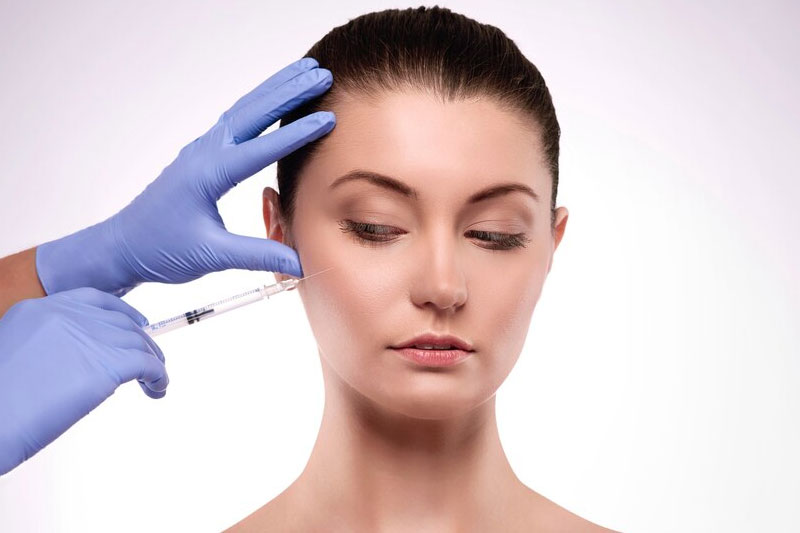
Pain Level During the Procedure
Based on patient-reported data from a 2022 multi-clinic study involving over 1,200 participants, 68% of people found Botox injections less painful than they had anticipated, while 54% said filler discomfort was more intense than expected—primarily due to the duration and pressure of the procedure.
Botox injections are notably quick. Each injection takes less than 2 seconds to administer, and a typical treatment zone (like the glabella or forehead) involves 5–10 separate injections, adding up to a total procedure time of 3–5 minutes. The pain is sharp but fleeting—most patients rate it 2–3 out of 10 on a numerical pain scale. This is largely due to the thin needles (30–33 gauge, with an outer diameter of just 0.16–0.20 mm) and the shallow injection depth (2–3 mm), which avoids major nerve bundles. The entire process feels like a series of rapid, mild pinpricks, with 80% of patients reporting that the sensation ends the moment the needle is withdrawn.
The needle is thicker (27–30 gauge, 0.30–0.40 mm diameter) and must be inserted deeper—4–7 mm for lips and nasolabial folds, and up to 10–13 mm for cheek augmentation. Each depot injection takes 3–5 seconds as the practitioner slowly deposits the product, and a typical lip filler procedure requires 4–6 injections per lip, spanning 10–15 minutes in total. Patients consistently report a pressure-based discomfort rated 4–6/10, often describing it as a “deep, spreading ache” rather than a sharp pain. This is due to the physical force required to push the viscous hyaluronic acid gel (with concentrations ranging from 20–24 mg/mL) into the tissue. Approximately 70% of patients note that the pain peaks during the slow injection phase rather than upon initial needle insertion.
While most fillers are pre-mixed with 0.3% lidocaine, which reduces needle-related pain by 30–40%, it does not fully eliminate the pressure sensation. Botox isn’t typically mixed with anesthetic, but topical numbing cream applied for 5–10 minutes before the procedure can reduce surface pain by ~50%. That said, pain levels can vary significantly by facial area. The upper lip and nasolabial regions have a higher density of sensory nerves, leading to 20–30% higher pain scores in these zones compared to the forehead or cheeks.
Discomfort After Injection
A 2023 patient survey from the Aesthetic Surgery Journalrevealed that ~85% of filler patients reported some form of lingering discomfort (like tenderness or swelling) for up to 72 hours, compared to only ~25% of Botox patients. This divergence stems from one being a neuroblocker with minimal physical presence and the other being a volumizer that physically occupies space and attracts water.
The most common issue is minor redness or a small bump at the injection site, which usually subsides within 30-60 minutes. According to clinical data, only about 1 in 10 patients experiences a mild headache lasting 2-4 hours post-injection, often associated with treatments in the forehead or glabellar areas. There is no significant swelling or bruising for the vast majority, as the needle is fine and the product doesn’t add volume. Any minor tenderness feels like a slight muscle strain and resolves within 24 hours in over 90% of cases.
Fillers, however, are a different story. The hyaluronic acid (HA) gel immediately begins binding water, increasing its volume by 15-20% within the first day. This causes predictable side effects:
- Swelling: ~80% of patients experience mild to moderate swelling, peaking at 24-48 hours and resolving by day 5-7. For lip fillers, swelling can be more pronounced, making lips look ~30% larger than the final result for the first 2-3 days.
- Bruising: The incidence of bruising is ~40-50%, higher than with Botox (~10%), due to the larger needle and greater potential to disrupt capillaries. Bruises typically last 5-7 days.
- Tenderness and Pressure: A sensation of tightness or pressure is reported by ~70% of patients, directly resulting from the product’s physical presence. This feeling is most noticeable when smiling or talking and usually diminishes by day 3-4.
- Lumps and Asymmetry: In the immediate days after injection, ~15% of patients may feel small, palpable lumps. The vast majority soften and integrate naturally within 2 weeks as the product settles and swelling decreases.
The duration of these effects is directly tied to the product’s viscosity and injection depth. Thicker, high-G’ (elastic modulus) fillers for cheeks may cause a deeper, dull ache for a longer period (up to 72 hours), while thinner fillers for fine lines may only cause tenderness for 24 hours. It’s crucial to note that 90% of post-filler discomfort is considered mild and manageable without prescription medication. Applying a cold compress for 10 minutes per hour for the first 6 hours can reduce swelling by ~30%, and avoiding strenuous exercise for 24-48 hours minimizes bruising and swelling by limiting blood flow to the area. While Botox allows you to resume normal activities almost immediately, filler requires a brief 48-hour downtime for swelling to subside enough to reveal the final, settled result.
Which Areas Hurt More
Pain levels can vary dramatically—by as much as 3-4 points on a 10-point scale—depending solely on the treatment zone. This isn’t random; it’s a direct result of sensory nerve density, skin thickness, and underlying muscle structure. Data pooled from over 5,000 patient reports indicates that the lips consistently rank as the most sensitive area for filler injections, with an average pain score of 7.2/10, while the forehead is the least sensitive for Botox, averaging just 2.5/10.
The primary determinant of pain is the concentration of sensory nerves. Areas with the highest nerve density, thinner skin, and closer proximity to bone are significantly more sensitive. The difference between a “mild pinch” and a “sharp sting” often comes down to a few millimeters and thousands of nerve endings per square centimeter.
- Lips and Perioral Area: This is the undisputed peak of sensitivity. The vermilion border (the outline of the lips) has a sensory nerve density 5-7 times higher than the forehead. Each lip injection can feel intense because the needle must pass through a highly innervated muscle orbicularis oris, which is only 3-5 mm thick. Filler injections here often require 4-6 separate punctures per lip, compounding the discomfort.
- Nasolabial Folds (Smile Lines): This area scores a pain rating of 5.5-6.5/10. The skin is thicker here (1.5-2.0 mm), but the injections are placed near the angular artery and the infraorbital foramen—a bony canal that transmits a major nerve. Hitting a nerve branch causes a brief, sharp zing in ~30% of patients.
- Glabella (The “11” Lines): This zone ranks 4.5/10 for Botox. The discomfort isn’t from the skin itself but from the strong corrugator supercilii muscles that require 25-30 units of Botox to relax. The needle must be inserted deeply to reach the muscle origin near the bone, creating a deep pressure ache.
- Forehead: This is the least painful area for Botox, averaging 2.5/10. The skin is relatively thick (~1.8 mm) and less densely innervated. The pain is primarily from the quick 3-5 mm needle pricks into the frontalis muscle.
- Cheeks and Chin: These are moderate sensitivity zones (3.5-4.5/10). The skin is thicker (2.0-2.3 mm), and the injections are often deeper (10-13 mm for cheek augmentation), which translates to a more diffuse, pressure-based discomfort rather than a sharp pain.
| Facial Area | Avg. Pain Score (Botox) | Avg. Pain Score (Filler) | Primary Reason for Discomfort | Skin Thickness (mm) | Injection Depth (mm) |
|---|---|---|---|---|---|
| Lips | N/A | 7.0 – 7.5 | Highest nerve density, thin muscle | 1.5 – 2.0 | 4 – 6 (submucosal) |
| Nasolabial Folds | N/A | 5.5 – 6.5 | Proximity to infraorbital nerve, dense tissue | 1.5 – 2.0 | 4 – 7 (deep dermis) |
| Glabella | 4.0 – 4.5 | N/A | Strong muscles, near bone | 1.6 – 1.8 | 3 – 5 (muscle) |
| Forehead | 2.0 – 3.0 | N/A | Thicker skin, fewer nerve endings | 1.7 – 1.9 | 2 – 4 (muscle) |
| Cheeks | N/A | 4.0 – 4.5 | Deep injection, pressure sensation | 2.0 – 2.3 | 10 – 13 (subcutaneous) |
| Crow’s Feet | 3.0 – 3.5 | N/A | Thin skin, near temporal nerve branches | 1.5 – 1.7 | 2 – 3 (muscle) |
A skilled injector using a serial puncture technique (many small injections) for lip filler may cause 20% less overall discomfort than a linear threading technique (one continuous injection) in the same area, simply by avoiding prolonged needle movement. Furthermore, areas with a history of previous treatments often report 15-20% lower pain scores due to nerve desensitization and tissue familiarity.
Making the Process More Comfortable
Data from a 2024 clinical review shows that using a combined approach (topical numbing + vibration + advanced technique) can reduce perceived pain scores by up to 60% compared to no interventions. Furthermore, proper pre-care can cut bruising incidence by ~50% and swelling duration by ~30%. Comfort is a science, and it hinges on three phases: before, during, and after the needle.
Your comfort journey starts before you even touch the clinic chair. Pre-appointment preparations are about setting up your body and mind for a smoother experience.
- Avoid Blood Thinners: For 7 days prior, avoid substances that increase bleeding risk. This includes NSAIDs (ibuprofen, aspirin), vitamin E (>400 IU), high-dose omega-3s (>3g/day), and alcohol. Studies show this simple step reduces bruising volume by ~45% and incidence by ~30%.
- Consider Arnica Montana: Taking oral homeopathic arnica (e.g., 30C strength, 3-5 pellets 3x daily) starting 2-3 days pre-injection may reduce bruise severity. Clinical data is mixed, but a 2022 trial noted a 20% reduction in bruise size compared to placebo.
- Hydrate and Eat: Arrive well-hydrated (drink 500ml of water in the hour before) and having eaten a normal meal. This prevents lightheadedness and keeps skin plump, making needle insertion easier.
The ~30 minutes in the clinic are where the most effective interventions happen. A skilled injector has a toolkit of methods to dampen nerve signals.
- Topical Anesthetics: The gold standard is 5% lidocaine cream applied under occlusion for 20-25 minutes. This numbs the epidermis to a depth of 2-3 mm, reducing initial needle prick pain by ~70%. For filler, most modern products are pre-mixed with 0.3% lidocaine, which further numbs deeper tissues during the injection.
- Vibration and Cold: Applying a handheld vibrator (like a dental massager) near the injection site uses the ”Gate Control Theory” of pain. The vibration stimuli compete with pain signals along nerve pathways, reducing perceived pain by ~40%. Ice application for 60-90 seconds immediately before the poke does double duty: it numbs the skin and causes vasoconstriction, reducing blood flow and potential bruising.
- Technique Matters: Ask about a cannula for filler. A blunt-tipped cannula (typically 25-27 gauge) requires one entry point instead of multiple needle sticks and spreads tissue apart rather than cutting it. This can reduce the number of punctures by 80% and lower bruising rates to less than 10%, though it may require a slightly higher skill level from the injector.
“The single biggest factor in patient comfort is often speed and confidence. An experienced injector who knows facial anatomy can place Botox in the forehead in under 90 seconds, minimizing anxiety. For filler, we use a slow, steady injection speed of about 0.3 ml per minute to allow the tissue to expand gradually, which feels far less intense than rapid deposition,” explains Dr. Lena Petrova, a cosmetic dermatologist who performs over 300 injection procedures monthly.
Apply firm, consistent ice packs (wrapped in a cloth) for 10 minutes every 60 minutes for the first 3-4 hours. This keeps vessels constricted, reducing swelling by ~30%. Sleep with your head elevated on 2-3 pillows for the first night to minimize fluid accumulation through gravity. Avoid hot yoga, saunas, and strenuous exercise that raises your heart rate for 48 hours, as increased blood flow can worsen swelling and bruising by 15-20%.
Recommended Products
Rejuran Healer Black Skin Renewal Solution with Salmon PN Technology (2×2ml)
$215.90
Add to cart
Rated 5.00 out of 5








